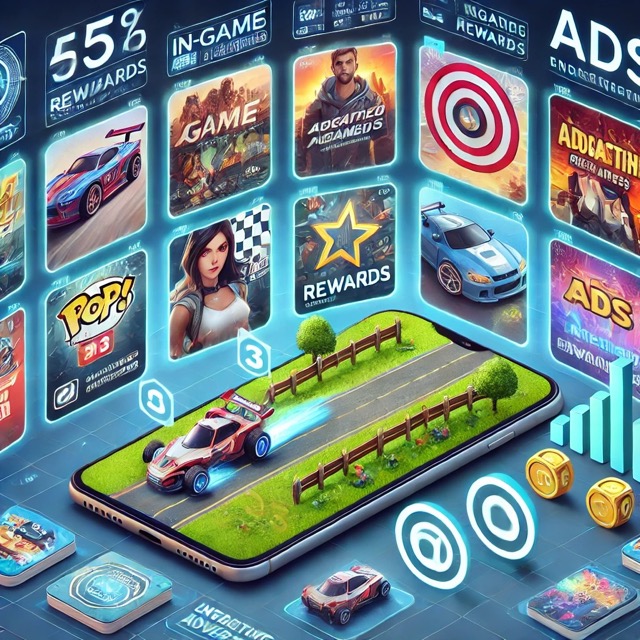
Video games have become a prime platform for reaching engaged and diverse audiences, especially as gaming revenues are projected to exceed $1 trillion by 2032. Effective video game advertising requires careful integration, clear metrics, and attention to the unique preferences of gaming audiences. This article explores industry insights with examples from brands like PlaySpark, Coca-Cola, and Nike, showcasing specific metrics to illustrate the impact of in-game advertising.
Key Advertising Strategies and Metrics
1. In-Game Advertising: Blending Seamlessly with Gameplay
In-game ads that feel like part of the environment are often the most effective. For example, EA Sports integrates brand ads into the stadium billboards, team uniforms, and arena environments in games like FIFA and Madden NFL. This strategy keeps ads relevant and mimics real-world sports events.
Metrics and Example: Coca-Cola’s Integration in FIFA* When Coca-Cola partnered with FIFA, they observed a 10% increase in brand recall among players exposed to their ads. According to a Nielsen study, players who saw branded ads within these games were 12% more likely to associate Coca-Cola with sports events, strengthening brand recall across younger demographics.
2. Branded Experiences and Custom Content: Building Stronger Connections
Beyond ad placements, creating branded experiences allows companies to make deeper connections. PlaySpark has leveraged this strategy by embedding loyalty points and branded mini-games within its titles, inviting players to engage for rewards and perks.
Metrics and Example: PlaySpark’s Loyalty Program with Beverage Company For a collaboration with a popular beverage brand, PlaySpark introduced a points system where players earned rewards through brand interactions. This campaign increased in-game engagement by 30% and drove a 22% uptick in brand mentions on social media as players shared their achievements. The collaboration also led to a 5% lift in repeat log-ins, demonstrating the value of in-game engagement on brand loyalty.
3. Reward-Based Ads: Incentivizing Players for Attention
Reward-based ads, which offer players in-game benefits for ad engagement, have become a staple of free-to-play games. For instance, Subway Surfers allows players to watch ads in exchange for in-game currency or power-ups, giving users control over whether they engage with ads.
Metrics and Example: Verizon’s Fortnite Data Rewards Verizon’s partnership with Fortnite offered data bonuses for players who watched branded in-game content or participated in challenges. The campaign increased Verizon’s brand awareness among young players by 18%, and players who engaged with the ads were twice as likely to associate Verizon with reliable gaming experiences. The campaign also led to a 15% rise in website traffic from mobile sources, driven by in-game call-to-action prompts.
4. Sponsored Events and Cross-Promotions: Leveraging Popular Games
Collaborating with games on special events or cross-promotions allows brands to tap into large, dedicated audiences. Nike’s collaboration with Fortnite included a virtual release of the Air Jordan 1, which attracted significant attention from both gamers and sneaker enthusiasts, boosting awareness of the product launch.
Metrics and Example: Little Caesars and Call of Duty* Little Caesars teamed up with Call of Duty to provide in-game rewards for pizza purchases, a campaign that saw a 12% increase in sales during its run. In addition, in-game surveys revealed that 40% of players were more likely to buy from Little Caesars due to the promotion.
Measuring Impact: How Brands Gauge Success in Video Game Ads
The effectiveness of video game ads isn’t always immediately visible, as long-term engagement often contributes to brand recall more than immediate purchases. Still, there are clear metrics brands use to evaluate success:
- Brand Recall: Coca-Cola’s integration in FIFA saw a 10% increase in recall among exposed players.
- User Engagement: Verizon’s Fortnite campaign led to a 15% increase in mobile traffic, linking engagement to brand site visits.
- Repeat Log-ins: PlaySpark’s loyalty rewards boosted repeat log-ins by 5%, encouraging long-term engagement with the brand.
- Sales Lift: Little Caesars saw a 12% increase in sales during its Call of Duty promotion, indicating a direct impact on revenue.
Challenges and Considerations for Brands in Video Game Advertising
- Maintaining User Experience: Ads need to blend into the game environment. In FIFA, ads on stadium boards work because they mirror real-world sports settings, whereas pop-up ads could interrupt the flow.
- Tracking and Measuring Success: While metrics like brand recall and engagement are measurable, connecting in-game actions to real-world purchases or brand loyalty often requires multi-channel tracking over time.
- Balancing Ad Frequency: Too many ads can frustrate players. Nike’s Fortnite campaign, for instance, kept ad frequency low but highly impactful, leading to higher engagement without oversaturating players.
Applying Video Game Advertising Techniques to the Real Money Gaming Industry
The real money gaming industry can adopt similar strategies, integrating IP and influencer partnerships to create a personalized, interactive experience for players. By embedding licensed IP elements, such as well-known characters, or by partnering with influencers to promote features like exclusive game modes, platforms can enhance engagement and drive loyalty. Additionally, offering branded or influencer-endorsed reward systems allows players to earn exclusive in-game items or access to special events, mirroring the dynamics of social casinos and sweepstakes while supporting responsible gaming practices.
Summary:
As the gaming ecosystem evolves, real money platforms have the potential to attract diverse audiences by blending IP, influencer marketing, and reward-based ads, creating an ecosystem where branded content aligns seamlessly with user experience. This approach will likely appeal to players accustomed to gamified, integrated ad experiences in traditional games, further merging entertainment with engagement. Real money gaming platforms that adopt these techniques stand to increase user retention, drive brand loyalty, and unlock new revenue streams, provided that they remain committed to user-friendly, non-intrusive ad integrations.








